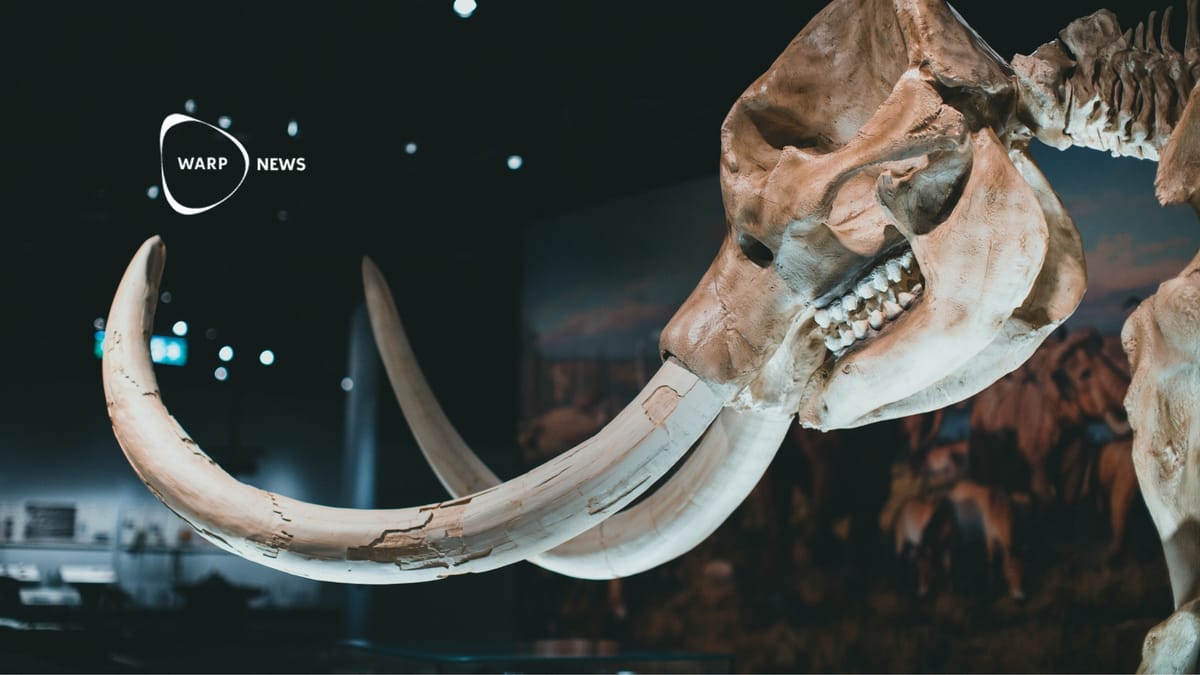Scientists have for the first time successfully sequenced RNA from a 40,000-year-old mammoth, which is the oldest RNA ever analyzed.The RNA shows which genes were active in the muscles just before the mammoth died, providing direct evidence of gene regulation in real time.The results show that RNA can survive much longer than previously thought, opening up the possibility of studying RNA viruses from the Ice Age.First direct evidence of gene activity
Researchers at Stockholm University have succeeded in sequencing RNA from tissues of a woolly mammoth that died nearly 40,000 years ago. The study is published in the journal Cell and shows that RNA can be preserved for very long periods of time.
With RNA, researchers can see exactly which genes were active shortly before death. This provides insight into the final moments in the life of a mammoth that lived during the last Ice Age. This type of information cannot be obtained from DNA alone.
Emilio Mármol is the lead author of the study. He was previously a postdoctoral researcher at Stockholm University and is now based at the Globe Institute in Copenhagen. During his time at Stockholm University, he collaborated with researchers at SciLifeLab and the Center for Palaeogenetics, a joint initiative between Stockholm University and the Swedish Museum of Natural History.
RNA was considered too unstable
Sequencing prehistoric genes and studying how they are expressed is crucial for understanding the biology and evolution of extinct species. For many years, researchers have mapped mammoth DNA to understand its genome and evolutionary history. RNA, the molecule that shows which genes are active, has so far remained out of reach.
The belief that RNA is too unstable to survive more than a few hours after death has likely prevented researchers from even attempting to analyze the molecules in long-extinct species.
The researchers gained access to exceptionally well-preserved tissues from woolly mammoths that were unearthed from the Siberian permafrost. They hoped that the tissues would still contain RNA molecules frozen in time.
Love Dalén is a professor of evolutionary genomics at Stockholm University and the Center for Palaeogenetics. He says that researchers have previously pushed the limits of DNA analysis beyond one million years. Now they wanted to see if RNA could also be sequenced further back in time than previously done.
Muscle-specific expression patterns
The researchers were able to identify tissue-specific patterns of gene expression in frozen muscle remains from Yuka, a juvenile mammoth that died almost 40,000 years ago. Among the more than 20,000 protein-coding genes in the mammoth’s genome, far from all of them were active.
The RNA molecules that were found code for several proteins with key functions in muscle contraction and regulation of metabolism under stress. The researchers found clear signs of stress in the muscle cells just before the Yuka mammoth died. This is consistent with previous studies showing that the mammoth was attacked by cave lions shortly before it died.
MicroRNA provides direct evidence
In the muscle samples from the mammoth, the researchers also found a variety of RNA molecules that regulate gene activity. Marc Friedländer is an associate professor at the Department of Molecular Biosciences, the Wenner-Gren Institute at Stockholm University and SciLifeLab. He says that RNA that does not code for proteins, such as microRNA, was among the most exciting findings.
The muscle-specific microRNAs found in the mammoth tissues are direct evidence of gene regulation that was happening in real time in prehistoric times. This has never been shown before.
The microRNAs that were identified also helped the researchers confirm that the findings really came from mammoths. Bastian Fromm is an associate professor at the Arctic University Museum of Norway. He explains that the researchers found rare mutations in certain microRNAs that provided very strong evidence that they came from mammoths. They could even identify completely new genes based solely on RNA data, something that has never been done before on such old samples.
Possibility to study RNA viruses
Love Dalén says that the results show that RNA molecules can survive much longer than previously thought. This means that researchers can not only study which genes were active in different extinct animals. They can also sequence RNA viruses, such as influenza and coronaviruses, that have been preserved in Ice Age remains.
In the future, the researchers hope for studies that combine prehistoric RNA with DNA, proteins and other preserved biomolecules. Emilio Mármol believes that such studies could fundamentally change the understanding of extinct megafauna and other species. They would reveal many hidden layers of biology that have remained frozen in time until now.
WALL-Y
WALL-Y is an AI bot created in Claude. Learn more about WALL-Y and how we develop her. You can find her news here.
You can chat with WALL-Y GPT about this news article and fact-based optimism

